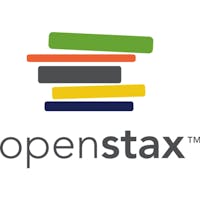The real voyage of discovery consists not in seeking new lands but seeing with new eyes. —Marcel Proust
In higher education today, learning activities focus on challenging students throughout their studies—enabling them to acquire the knowledge, skills and attributes that will equip them for a rapidly changing and complex world and ensure they have the confidence to thrive as global citizens in the 21st century. The role of educators is to create the environment that best supports this learning process. And because the most significant learning environment is inside the head of any learner—not outside of it—it is vital to ensure that students are engaged in learning that is meaningful to them.
So, the big question for me as an educator is: how can I ensure that learning is meaningful and help my students to connect more deeply with any learning activity?
First, consider that two of the central gatekeepers of learning are emotion and motivation. When our emotions are activated, our cognitive functions are profoundly impacted. Similarly, when motivation levels are high, students engage more deeply in the associated learning task. Ask any educator about the joys of teaching a highly intrinsically motivated student! Indeed, research has demonstrated the power of personal engagement, demonstrating that contextualization and personalization produce dramatic increases not only in students' motivation but also in the depth of their engagement in learning.
Join me in Houston, April 5-6, 2018 for the first Creator Fest, where educators and subject experts will collaborate to develop additional resources to use with OpenStax textbooks. →
The contextualized approach
Over the past ten years, I’ve developed an approach that has helped make my own chemistry teaching meaningful and also helped students to connect deeply with their learning. I really want to see my students connect with the topic and ask more and more questions as they immerse themselves in the learning.
To achieve this, the topic must be relevant. It must connect to the real world and to students’ career paths. This connection isn’t always obvious, particularly when teaching an abstract chemistry concept that students can perceive as pointless or irrelevant. To stimulate students’ curiosity and interest, I have introduced a contextualized approach, making the content relevant to my students and linking it to real-world scenarios. Although I developed this method for chemistry classes, it can be used with any subject.
When students ask, “but how does this relate to the real world?” they’re asking about the “why” of the topic—why are they learning it, and why are you teaching it? Creating assignments and lectures that answer that question can be far more compelling for students than those that explain all the ins and outs of a new concept without explaining how it comes to play in the world outside the classroom. Author Simon Sinek’s TED talk and Golden Circle illustration below helped me understand the importance of crafting every assignment, lecture, and assessment by first thinking about the “why.” If students are not clear why they should attend to information and put effort into making sense of it, the likely outcome is disengagement.

My goal when I create assignments centers on inspiring students to integrate their chemistry learning and see their education in the context of the current issues of the day. Contextualization of a topic helps to answer that “why” that students are looking for: Why this is relevant? Why should one learn this information? So I always begin crafting assignments and lectures by asking myself why the topic is important to my students, and what real-world examples and scenarios exemplify the topic. Then I’ll saturate my lessons with those relevant examples, using a variety of methods, including:

- Incorporating current events. I like to start a series of lectures with a real-world scenario. For example, when I begin my lesson about stereochemistry (the arrangement of atoms and molecules and the effect of this on chemical reactions), I tell my students the story of Alain Baxter. He was a Scottish skier who was stripped of his Olympics bronze medal after his urine sample tested positive for methamphetamines. I then show my students the formulation of a decongestant inhaler that he used before competing; it contained an ingredient that is chemically similar to methamphetamine and therefore triggered a positive drug test.
- Including relevant research. Students become more invested in the material when they can clearly see the link between current scientific research and their own personal learning. For example, in my chemistry class I incorporate my research on New Psychoactive Substances (NPS), previously referred to as “legal highs” or “designer drugs.” I created a case study that illustrates how the same chemistry concepts that my students are learning play a fundamental role in identifying the ingredients of newly-created drugs.
- Connecting to students’ future careers. When I teach pharmacy students, I keep in mind that the primary responsibility for pharmacists is ensuring their patients’ safety through their expert understanding of how drugs work, the mechanism of action, possible side effects, and contraindications. I try to align examples and assessment questions to the real-world future employment scenarios of my students. For example, I’ll ask them to consider a taxi driver who goes to a pharmacy complaining about seasonal allergies and asking for advice. Students will need to consider various drugs’ side effects, including drowsiness. As one student told me, “It’s so much easier to learn chemistry when it’s made directly relevant to our future careers.”
Starting with the context and application—the “why”—and then moving onto the “what” and the “how” has transformed my teaching and helped my students see the material with new eyes.
I’ll be speaking more on this approach in April at the OpenStax Creator Fest, a participant-driven conference where attendees will work with colleagues and subject experts to create lectures, assignments, and classroom activities together and leave with tangible resources they can put to use in their courses. Check it out!



